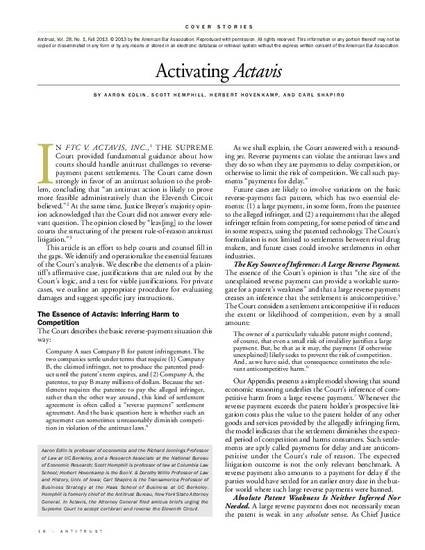
In Federal Trade Commission v. Actavis, Inc., the Supreme Court provided fundamental guidance about how courts should handle antitrust challenges to reverse payment patent settlements. The Court came down strongly in favor of an antitrust solution to the problem, concluding that “an antitrust action is likely to prove more feasible administratively than the Eleventh Circuit believed.” At the same time, Justice Breyer’s majority opinion acknowledged that the Court did not answer every relevant question. The opinion closed by “leav[ing] to the lower courts the structuring of the present rule-of-reason antitrust litigation.”
This article is an effort to help courts and counsel fill in the gaps. We identify and operationalize the essential features of the Court’s analysis. We describe the elements of a plaintiff’s affirmative case, justifications that are ruled out by the Court's logic, and a test for viable justifications. For private cases, we outline an appropriate procedure for evaluating damages and suggest specific jury instructions.
- antitrust,
- drugs,
- FTC,
- Hatch-Waxman,
- innovation,
- patent,
- Paragraph IV,
- pay for delay,
- pharmaceuticals,
- regulation,
- reverse payment,
- settlement
Available at: http://works.bepress.com/aaron_edlin/95/

Antitrust Magazine, Fall 2013, at 16.